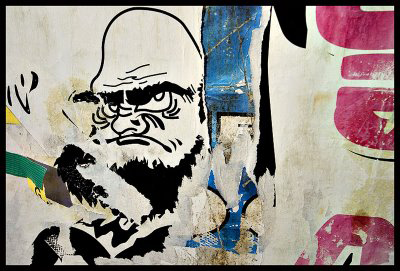 Early Chinese Zen masters seldom spoke about ideas like emptiness. Early writings also lack discussions about sutras, including texts like The Diamond Sutra, which is strongly linked to the Zen tradition. The Heart Sutra is hardly mentioned, and the bodhisattva ideal also gets very little ink in early records. Often, when such ideas and texts are mentioned by the old masters they are referred to with a dismissive, even derisive, tone.
Early Chinese Zen masters seldom spoke about ideas like emptiness. Early writings also lack discussions about sutras, including texts like The Diamond Sutra, which is strongly linked to the Zen tradition. The Heart Sutra is hardly mentioned, and the bodhisattva ideal also gets very little ink in early records. Often, when such ideas and texts are mentioned by the old masters they are referred to with a dismissive, even derisive, tone.
The Lamp Records, composed primarily between the 9th and 13th centuries, comprise the principal collection of ancient Zen writings. They consist of a huge collection of foundational Zen stories (koans) that served as source material for later books like The Blue Cliff Record, Mumonkan, and other widely read Zen classics. The Lamp Records defines traditional Chinese Zen at its apotheosis. But these records say little about the concepts and sutras I refer to above. Is this because ancient Zen really did transmit something “without setting up a single word, outside the [traditional] teachings,” as claimed by the Buddha in his legendary teaching at Vulture Peak? Given the prominence of these texts and ideas in Zen practice today, how do we explain their omission in old Zen writings? Evidence suggests that Bodhidharma’s Zen turned its back on Buddhist doctrines espoused by other sects, and those doctrines only later found their way into his Zen tradition.
The great Chinese monk-scholar Dao Xuan gives an account of Bodhidharma’s most senior disciple, Sengfu. He explicitly states that after Sengfu became Bodhidharma’s disciple, he “never again studied sutras.” An early story about the popularity of Zen practice in the Northern Wei dynasty (around the year 500 AD) recounts that the wife of the emperor became interested in the new, popular Zen movement, and so invited a hundred practitioners and Zen teachers to live in the palace where she supported them. “Thereupon throughout the capital city, teachers and monks all practiced Zen, and did not again express interest in sutras.”
Other early Zen teachers, like the critically important “fourth ancestor” Daoxin, also emphasized meditation and understanding the nature of mind over sutra study. However, the most radical rejectionist may have been Baizhang. I’ll explore his surprising record in my next blog.
—Andy Ferguson
This post is part of author and scholar Andy Ferguson’s new “Consider the Source” series. As an old Chinese saying goes, “When drinking water, consider the source.” In the coming weeks, Ferguson will ask and answer seemingly simple (but in the end, profound) questions about the “source” of East Asian Buddhism, weaving a tale of both spiritual inspiration and political intrigue.
This fall, Tricycle will be traveling to the source itself, China, in a special pilgrimage led by Ferguson and abbot of the Village Zendo Roshi Pat Enkyo O’Hara. Want to come with us? Click here for more information.
Ferguson is the author of Zen’s Chinese Heritage: The Masters and their Teachings, which is used widely by Western Zen teachers, and Tracking Bodhidharma, which offers a wealth of new information about the founder of Chinese Zen Buddhism.